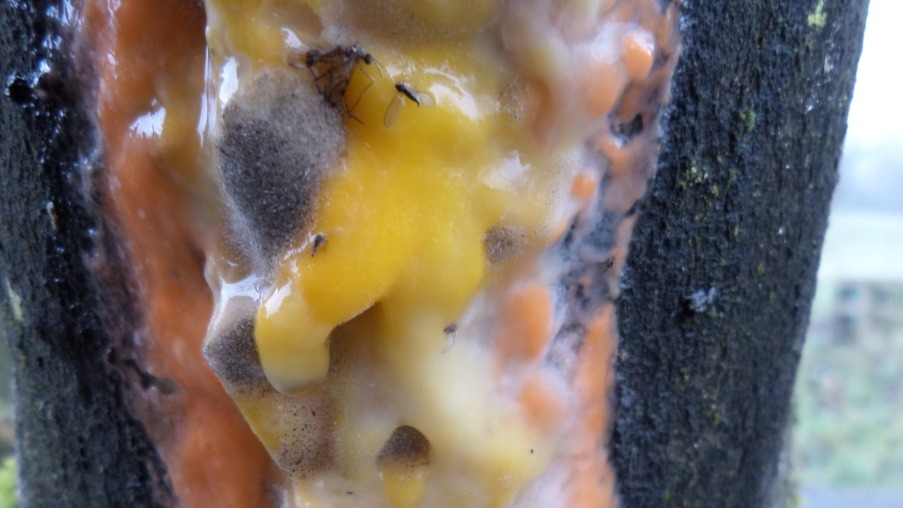Slime Flux is one of those creepy growths in nature that will bring up images from ghost busters. In Calgary the most significant growth is on Siberian elms. Many mature Trees have this condition, especially poplars and elms. I have seen a great gob of pinkish jelly attached at a wound site on the trunk, not pretty. This thing is not harmful and is in fact helpful. The pink slime is generated by fungus living off the free available energy in the leaking Tree sap.
Like sooty mold that sets up on many of our Trees that have scale insects or an aphid infestation, this is nature, as always filling the vacuum. The cause of the sap leaking is another story. It begins inside Tree trunks. As Trees age and deal with their problems, central sections of the trunk will die. Still valuable for support, these heart-wood sections are not included in the Tree's day to day storage and movement of energy. They are either too old or have been compartmentalized, used in defense of some attack, whether it was storm damage, heavy pruning or disease. This is not to say that they are not still packed with energy tied up in cellulose, one of the main constituents of wood. Wood rotting fungus WRF, would love to be able to get at this trove and live happily ever after. The Tree has other plans; a Tree's whole life cycle could be seen as a battle against WRF and eventually it will lose, but the longer the Tree survives, the better. And nature has provided the Tree with some powerful weapons.
Lets speak of the weapon of collaboration against your enemies. Through the eons Trees learned that it was better to spend some energy on your partners that help to defend you than to face a unrelenting enemy alone. Long ago Trees figured out that WRF had certain conditions that it multiplied in and certain conditions it could not live in. A water soaked anaerobic environment is one that WRF will not live in. Think of dry rot in house timbers. It loves about 40 % moisture content. Double the percentage and the rot goes away. So Trees invited certain bacteria inside, fed and sheltered them and the bacteria in return made the heartwood sections wet enough that the WRF couldn't get a hold. This is called wet wood, one of nature's many ingenious solutions that usually is a win, win.
And the WRF, hey, they've got lots to do.
(Photo credit: “Slime Flux on Sap at Barrmill" by Rosser1954, licensed under CC BY-SA 3.0.)









